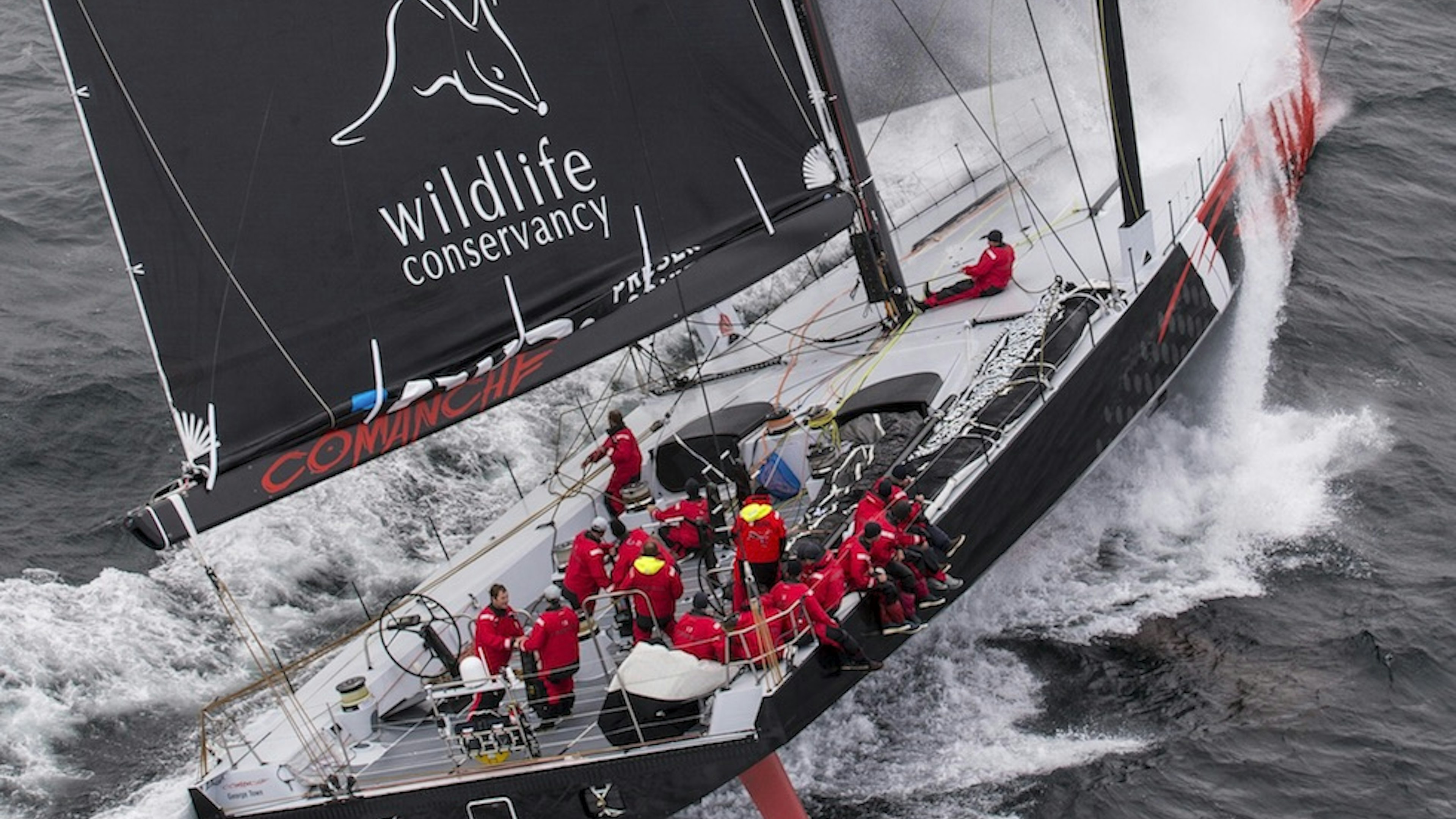Nytt fartrekord i segling – 618 sjömil på 24 timmar

 Siffrorna är smått otroliga men så är också 100-fotaren Comanche något utöver det vanliga.
Siffrorna är smått otroliga men så är också 100-fotaren Comanche något utöver det vanliga.
Det var under kappseglingen Transatlantic Race som den amerikanska rekordjägaren Comanche lyckades bräcka det gamla enskrovsrekordet från VOR 2008-2009.
Då var det Ericsson 4 under ledning av skepparen Torben Grael som lyckades avverka 596.6 sjömil under 24 timmar på väg ner mot Kapstaden.
Undertecknad befann sig en bit bakom Ericsson 4 ombord på Ericsson 3 och jag kan intyga att det var en vild färd.
Förutsättningen för att kunna slå rekordet är såklart mycket vind men också ganska platt vatten. Eftersom båten seglar mycket fortare än vågorna tar det tvärstopp om vågdalarna är för djupa.




Se videon med världens snabbaste kölbåt in action!
Comanche och hennes konkurrenter inför Sydney Hobart – miljardärernas kamp.
Med VO70-båtarna var farten stundtals över 30 knop men då försökte vi snarare bromsa än fortsätta gasa. Vi var för oroliga att båten skulle gå sönder.
Ombord på Comanche verkar man inte riktigt lika orolig. Båten är än mer anpassad för höga toppfarter och tack vare sin otroliga bredd så går det minst sagt undan på framförallt halvvind.
– Vi loggade ganska ofta över 35 knop, säger skepparen Ken Read.
Slagen av trimaran
Trots Comanches rekord och otroliga fart var hon inte snabbast på banan. Den skalpen tog tuffa MOD 70 trimaranen Phaedo 3 som vi sett i flera race tillsammans med Comanche under vintern och våren:
200 miljoner kölbåt får stryk av fattigmansracer.
Fartrekord i paradisrace runt Västindiska öarna.
Höjdpunkterna från Les Voiles de St Barth.

Här korsar Phaedo 3 mållinjen.

Skepparen Ken Read berättar om Comanche och vi får veta vem ägaren är.
Hela pressmeddelandet om Comanche från Transatlantic Race
”In stark contrast to the two days they spent wallowing in no wind last week, a corridor of strong southwesterly winds straddling the breadth of the North Atlantic for the last 48 hours has provided last Sunday’s starters with conditions to cover huge mileage.
A boat built exactly for this is Jim Clark and Kristy Hinze-Clark’s VPLP-Verdier designed 100-foot maxi Comanche, which this morning broke the monohull 24-hour distance record. In the period between 0530 UTC Friday and 0530 saturady, Comanche covered 618.01 nautical miles (or 25.75 knots average); however, it is important to note that this is subject to ratification by the World Sailing Speed Record Council.
This betters the previous record of 596.6nm set by Torben Grael and the Ericsson 4 VO70 crew during the 2008-9 Volvo Ocean Race. Two Ericsson 4 crew, Tony Mutter and Ryan Godfrey, are sailing on board Comanche in the Transatlantic Race.
“As a group, we are very excited about it,” confirmed skipper Ken Read, paying tribute to owner Jim Clark and his vision of high technology and amazing machines, as well as the designers, boat builders, crew and shore crew, that all contributed to the record. “This was the 100-foot boat that Jim Clark wanted: The fastest monohull in the world.”
As to what it was like on board, Read added: “Our top speeds were into the mid-30s a bunch of times. It is not like you are surfing down a wave, you just go….fast. The boat is amazing! You sail it heeled over and it feels like you are right on the edge, but when you grab the wheel you are in control. The boat is a phenomenal piece of machinery.”
On board the shorter Rambler 88, owner George David reckoned that they covered 587 miles over a similar period, “but for me that is my personal best. I did 584 on Rambler 100.”
Despite communication being difficult over satellite phone from what sounded like a water-born war zone, David summarised:
“We’ve been going along the bottom side of a low and we’ve had wind speed of 24-26 knots for almost 48 hours. Boat speed has been 25-26 knots, around 1.5 knots off Comanche’s pace, which is not unexpected given their bigger righting moment and stability.”
David said that they have their special side foil deployed to leeward, and this has been helping to keep the bow out of the water. “It helps keep water off the deck but there is still a lot of water on the deck. When you are going 25 knots in these sea conditions, you are going faster than the wave train and you [go over a wave and] slam into the back of the next one.
“Everyone is fine and everyone’s wet and it is a production getting foul weather gear on and off, but it is a good ride. I think it will back off in the next 12-15 hours, because we are slowly outrunning it.”

Målgång för några andra som hade en tuff men snabb överfart.
